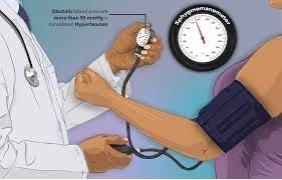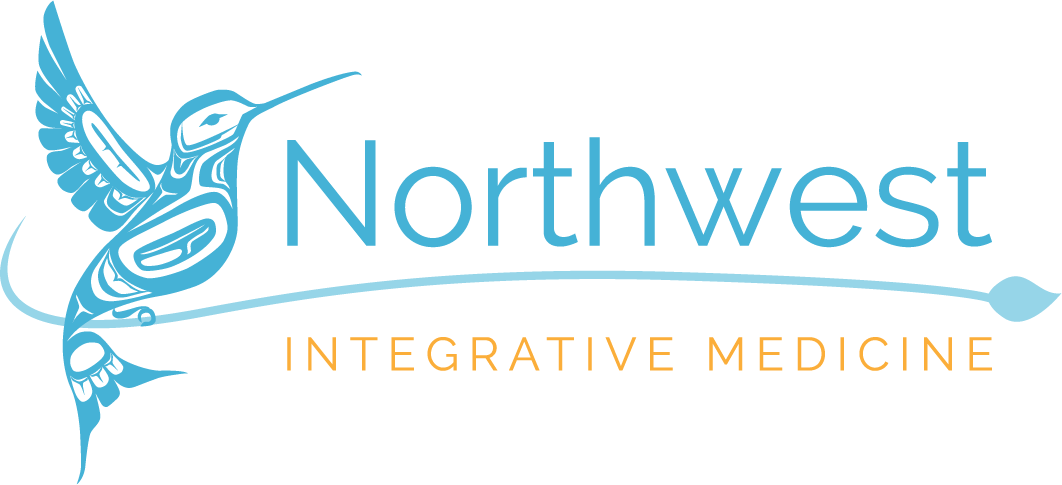
High blood pressure impacts billions of people of all shapes and sizes, across the entire planet and according to data from the Oregon Health Authority, just a little over 1 of every 4 adults in Oregon. While there may be a specific reason for your high blood pressure, about 90% of the time we don’t really know why it’s high! Crazy? I know!
Regardless of the cause of your high blood pressure, it needs to be appropriately managed and put back down into a healthier range. Why? Well, it increases our risk for things like:
- Heart attacks
- Strokes
- Heart Failure
- Kidney Disease
Although it’s not the only reason for those conditions to happen, it’s something we can manage to lower our risk for those scarier events. Currently, there is a bit of controversy for what is thought of as a blood pressure that’s toohigh.
The American College of Cardiology and American Heart Association classify high blood pressure as anything greater than or equal to a top number of 130 or bottom number of 80 (you may see this written as 130/80 mmHg). Older guidelines, as well as the European Society of Cardiology, the European Heart Association, and the International Society of Hypertension classify high blood pressure as anything above 140/90.
Although having a diagnosis of high blood pressure may scare you or at least give you some worry, the good thing about it is that there’s so much we can do to treat it!
So, what can we do?
In order of preference:
1). Diet and Lifestyle changes:
All of these on their own typically reduce blood pressure by a small amount, but something like the DASH diet, which encourages low salt/high potassium intake in addition to exercise and stress reduction can have about a 10mmHg drop in your systolic blood pressure and 5mmHg drop in your diastolic blood pressure – that’s better than most medications when used alone!
| Treatment | Blood Pressure Reduction |
|---|---|
| Low Salt Diet | 3-5 mmHg systolic (top number) 1-2mmHg diastolic (bottom number) |
| DASH Diet | 8-10 mmHg systolic 5 mmHg diastolic |
| High Potassium intake | 2-3 mmHg diastolic |
| Exercise – specifically cardiovascular type of exercise as opposed to yoga or resistance training | 2-5 mmHg diastolic |
| Meditation/Stress Reduction | 4 mmHg diastolic |
| Reducing Alcohol Intake | 2 mmHg diastolic |
Salt, although delicious, can sneak up on you in places you’ve never even thought of. By limiting the number of pre-packaged foods (especially canned soups and frozen meals) you’ll be able to make quite the impact in your salt intake without thinking much of it. The amount of salt we typically cook with at home is usually much less than what’s in a serving of a prepackaged meal. So for many of you, it’s not so much that you can’t ever cook with salt, but by limiting packaged, ultra-processed foods and mostly eating home cooked meals, you’ll be able to cut back on the salt intake without thinking much about it.
Quick tip: One simple trick is to wait until you’re about to eat and sprinkle some salt on top of your food as opposed to cooking with it in large sums. This way you can continue to cut back without noticing a loss of deliciousness.
Another neat thing is not only does cutting back on alcohol intake to modest levels (1-2 beverages for females, 2-3 for males) lower blood pressure, but it reduces your risk and the frequency of heart rhythm issues like atrial fibrillation.
2). Medication:
Many people may be hesitant or resistant to the idea of medication for high blood pressure, however, if you’re blood pressure is not adequately controlled with lifestyle changes listed above or you have blood pressure readings of immediate concern, medications should be started right away while continuing to maintain healthy dietary and lifestyle changes.
If you ever experience blood pressure readings ≥180/110 mmHg with chest pain, new or worsening headaches, vision changes, abdominal pain, changes to urination, changes in speech or new onset weakness, emergency evaluation should be done promptly as this may be a hypertensive emergency where high blood pressure levels are causing life threatening organ damage.
3). Dietary Supplements:
Some supplements can also provide small benefits; however, these should only be considered as a gentle push in the right direction and NOT replace dietary/lifestyle modifications or medications. We know from doing hundreds of blood pressure medication studies on hundreds of thousands of individuals that medications do save lives and prevent events like heart attacks and strokes.
Although dietary supplements may help to improve blood pressure, we don’t know their full effects, who would benefit most from them, the specific formulation, and studies are much smaller in their size (only a couple hundred of people most commonly). For many supplements, we also don’t know if they can consistently prove to prevent heart attacks or strokes which is why we care about treating blood pressure in the first place.
Supplements that have some consistent evidence supporting their use to lower blood pressure:
| Supplement | Blood Pressure Reduction |
| Hibiscus | |
| Garlic | |
| Beet Root Juice |
If you ever work with me as a patient, and a supplement is deemed appropriate for you, I typically stick with for hibiscus due to its low cost, minimal side effect profile, and it has the largest effect compared to other supplements.
- Whelton PK, Carey RM, Aronow WS, et al. 2017 ACC/AHA/AAPA/ABC/ACPM/AGS/APhA/ASH/ASPC/NMA/PCNA Guideline for the Prevention, Detection, Evaluation, and Management of High Blood Pressure in Adults: A Report of the American College of Cardiology/American Heart Association Task Force on Clinical Practice Guidelines [published correction appears in Hypertension. 2018 Jun;71(6):e140-e144]. Hypertension. 2018;71(6):e13-e115.
- Williams B, Mancia G, Spiering W, et al. 2018 ESC/ESH Guidelines for the management of arterial hypertension: The Task Force for the management of arterial hypertension of the European Society of Cardiology and the European Society of Hypertension: The Task Force for the management of arterial hypertension of the European Society of Cardiology and the European Society of Hypertension. J Hypertens. 2019 Jan;37(1):226
- Fu J, Liu Y, Zhang L, et al. Nonpharmacologic Interventions for Reducing Blood Pressure in Adults With Prehypertension to Established Hypertension. J Am Heart Assoc. 2020;9(19):e016804.
- Oregon Health Authority. Oregon Behavioral Risk Factors Surveillance System Adult Prevalence Data. Available at https://app.powerbigov.us/view?r=eyJrIjoiNGE3ZjJlMzAtYzRlYS00YjY2LWFlMmYtZmQ1ZDU4YWE1NDM2IiwidCI6IjY1OGU2M2U4LThkMzktNDk5Yy04ZjQ4LTEzYWRjOTQ1MmY0YyJ9 Updated 12/15/2020. Accessed November 3, 2021.
- Centers for Disease Control and Prevention. High Blood Pressure Symptoms and Causes. Available at https://www.cdc.gov/bloodpressure/about.htm. Updated May 18, 2021. Accessed November 3, 2021.
- Najafpour Boushehri S, Karimbeiki R, Ghasempour S, et al. The efficacy of sour tea (Hibiscus sabdariffa L.) on selected cardiovascular disease risk factors: A systematic review and meta-analysis of randomized clinical trials. Phytother Res. 2020;34(2):329-339.
- Abdelmonem M, Ebada MA, Diab S, et al. Efficacy of Hibiscus Sabdariffa on Reducing Blood Pressure in Patients with Mild to Moderate Hypertension: A Systematic Review and Meta-Analysis of published randomized controlled trials [published online ahead of print, 2021 Oct 20]. J Cardiovasc Pharmacol. 2021;10.1097/FJC.0000000000001161.
- Huang L, Trieu K, Yoshimura S, et al. Effect of dose and duration of reduction in dietary sodium on blood pressure levels: systematic review and meta-analysis of randomised trials. BMJ. 2020;368
- Bahadoran Z, Mirmiran P, Kabir A, Azizi F, Ghasemi A. The Nitrate-Independent Blood Pressure-Lowering Effect of Beetroot Juice: A Systematic Review and Meta-Analysis. Adv Nutr. 2017;8(6):830-838.
